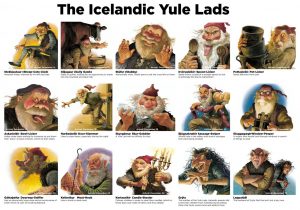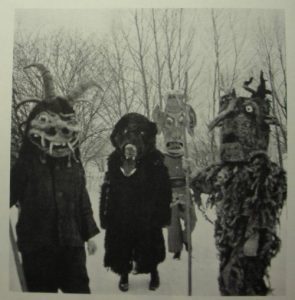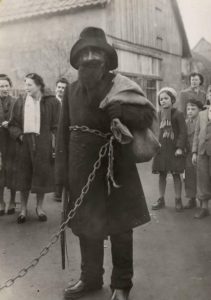Sometimes our readers will stump us with a question. Case in point:
Speaking of favorite Christmas movies, my son and I were recently pondering a line from a classic Christmas song. From “It’s the Most Wonderful Time of the Year”, what say ye oh learned Nerds? How do you respond to the following lyric: “there’ll be scary ghost stories, and tales of the glories of Christmases long, long ago.”
What are some scary ghost stories of Christmas? The song was written in 1963, so I’d say A Christmas Carol is probably a safe response. But what else would qualify?
I must admit that I didn’t immediately know the answer to that. I guess I’ve typically had visions of sugarplums that danced in my head come Christmastime. Luckily, other readers came to the rescue and provided a little Google-fu. Case in point:
- The Stuff You Missed in History Class podcast had a couple episodes that were devoted to some forgotten Christmas lore like Krampus, the evil demon anti-Santa, and included a tale of the Catalan pooping log that shouldn’t be missed. (Thank you Carmel.)
- Then our writer Jason Sansbury jumped in and discovered The Origins of Ghost Stories at Christmas. That article alone has enough links to get give you the chills over a glass of egg nog.
But I love monsters and lore and digging into the folklore origins of the things us Earth nerds love. So now it’s my turn. Case in point:

The Yule Lads. Who do you get when you cross a troll with a tiny 8 pound, 6 ounce baby Jesus in a manger? The Yule Lads, who are mothered by the ogre Grýla, that’s who.
20th century Norwegian tales brought gave us a kindly and gentle Julenisse (Santa Claus), who brought gifts to good children. But that’s not how the story began. Centuries earlier it was the Jólasveinar, or Yule Lads. The Yule Lads were 13 Icelandic trolls and each had a name and distinct personality. But the tradition went that each of them stole things and caused trouble around Christmastime. In fact, it was common for them to be used to scare children into behaving.
But later tales mingled the Jólasveinar with Julenisse, who was wholly benevolent and kind enough to leave gifts in shoes of children. So instead of Santa Claus it used to be 13 Icelandic trolls and their nasty Yule Cat named Jólakötturinn. The kicker was that the mother of the Yule Lads was Grýla, who predated the Yule Lads in Icelandic folklore. She was known as the ogress who kidnapped, cooked, and ate children who didn’t obey their parents. The ogress story became mixed with the Yule Lad story in the 17th century.
I’ll take jolly old Saint Nick any day of the year, but I’m guessing that Norwegian children obeyed their parents better than today’s kids do.

But we want even more monstrous Christmas tales. In Austria nd Germany there were stories of a witch named Frau Perchta. During the 12 days of Christmas (December 25 through Epiphany on January 6), Frau Perchta would hand out both rewards and punishments.
You need not worry unless you were sinful. But if you made the naughty list, her gruesome punishment was to rip out your internal organs and replace them with garbage. I’ll take coal, thank you very much.
The story of Frau Perchta is thought to potentially be druidic in origin, perhaps having descended from a goddess of nature that tended to the forest, only to interact with humans during Christmastime. That would explain her lack of social skills.

But what about a real scary dude. Hans Trapp is said to be a real man, but unlike Santa, Trapp was rich, greedy, and evil. This anti-Santa would hand out punishment to children in France.
Thought to worship Satan, Trapp was excommunicated by the Catholic Church and excited into the forest. From there he preyed upon children, often disguised as a scarecrow.
Hans Trapp, like so many other scary traditions from Christmas, has a couple frightening things going on at once. For one, you don’t lure children into the woods. That’s just not something one ever endeavors to do. Second, a scarecrow disguise with straw jutting out the ends of your sleeve takes it to a whole new level of creepy.
Not surprisingly, the Puritans hated all the above stories, calling them little better than paganism. If you think Starbucks offering simple red cups is evidence of a war on Christmas, you should take it up with the Puritans. They banned Christmas, making it illegal to even celebrate it for 25 years in the 1600s. I, for one, am glad to have it back. Even if some of the stories from its past are a little creepy.

